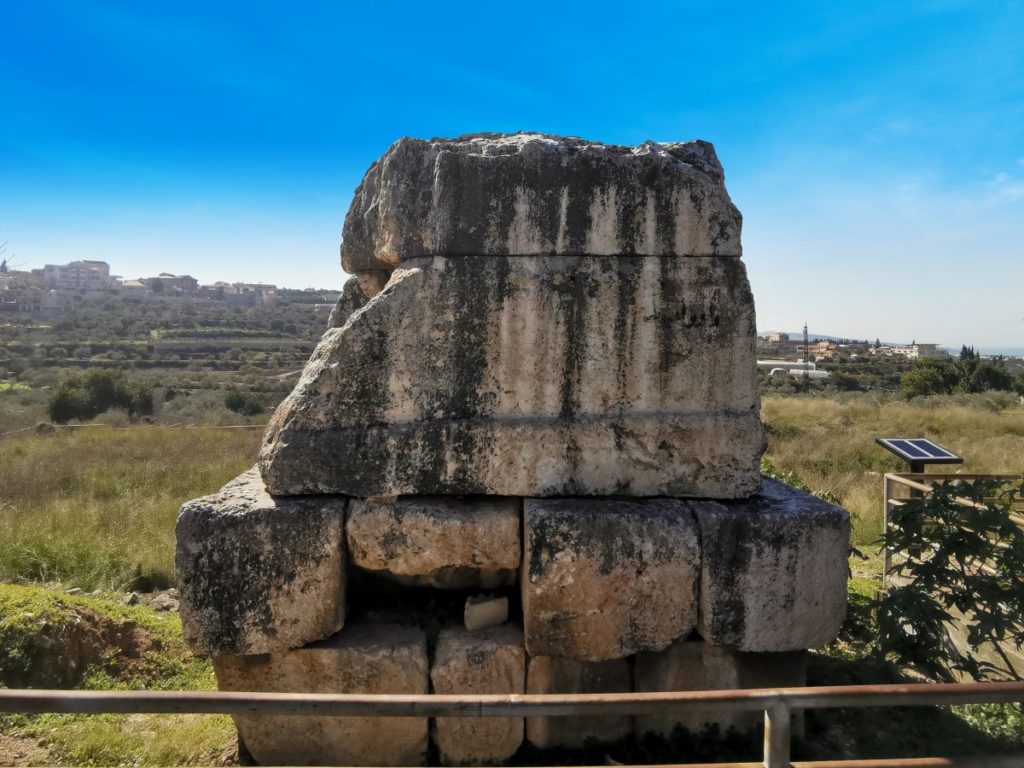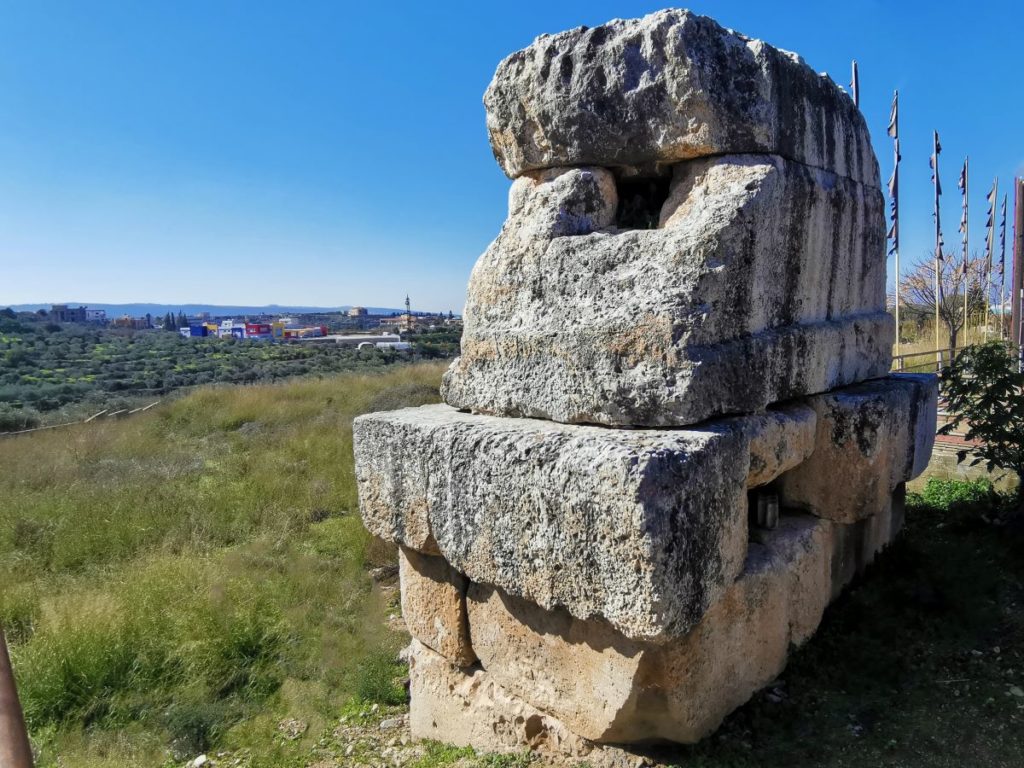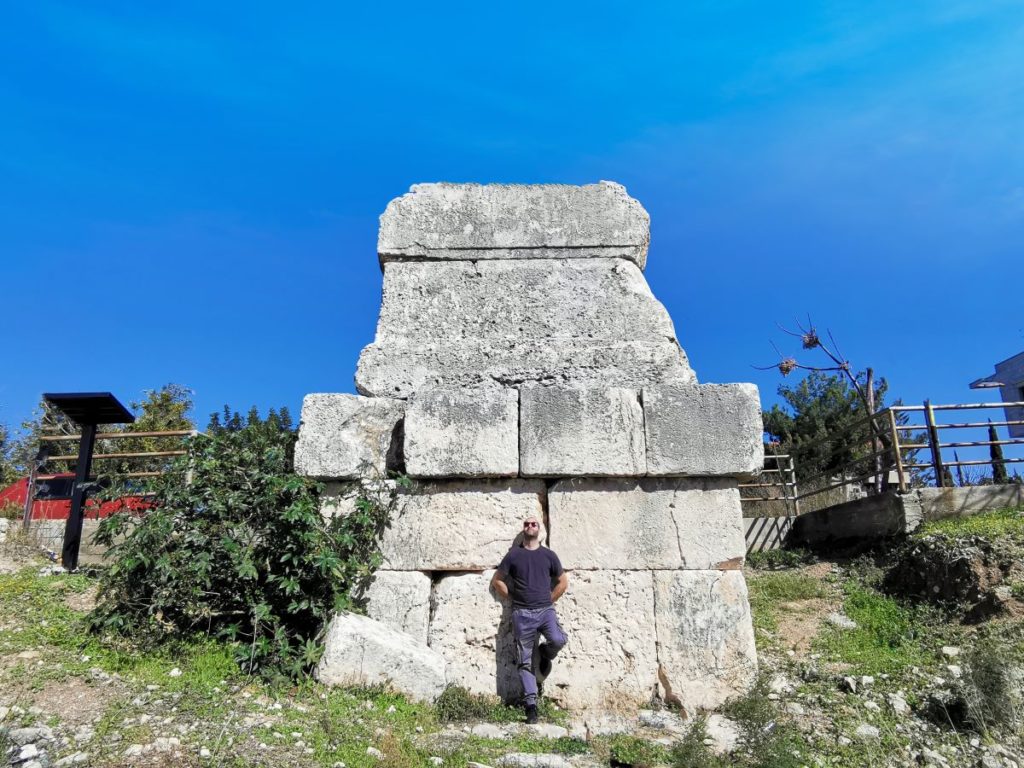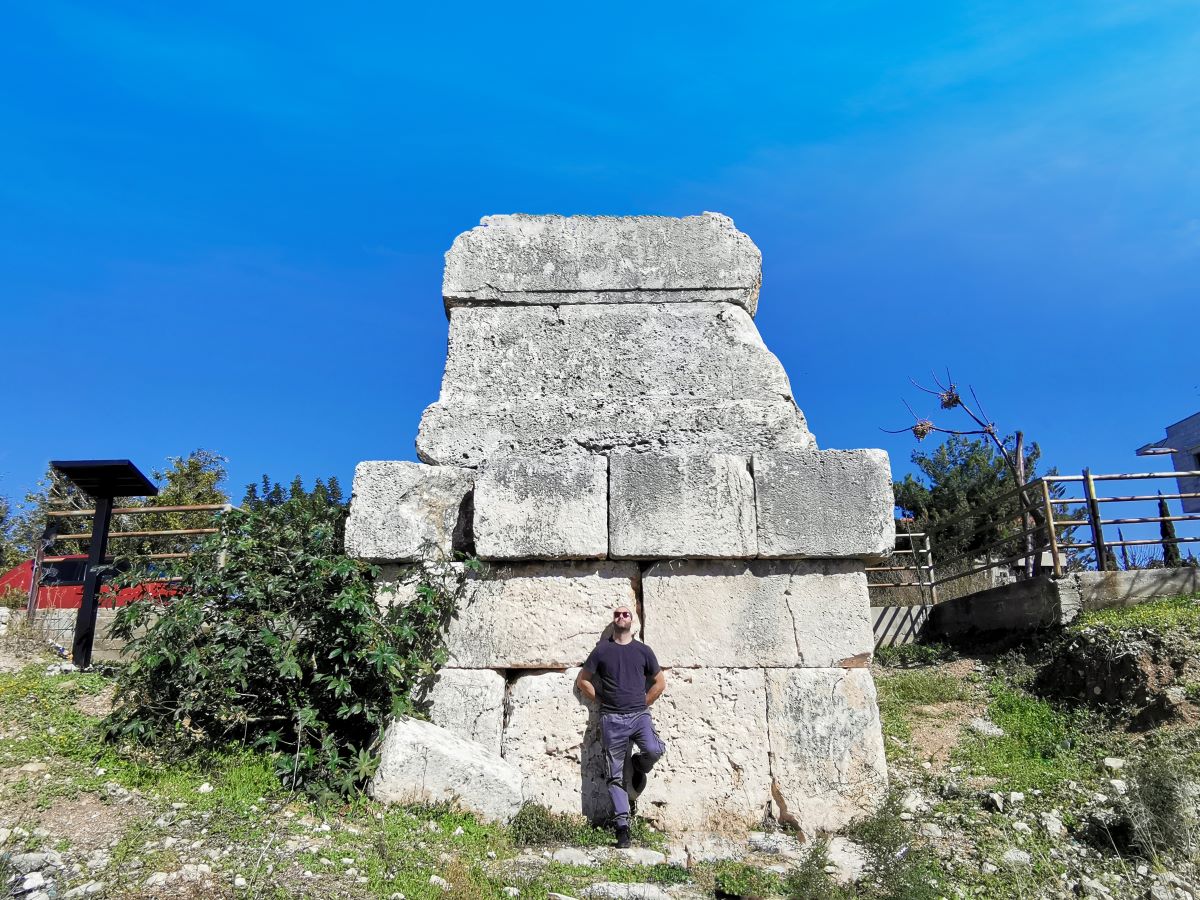The village of Hanawai houses a unique sarcophagus commonly known today as Kabr Hiram (Tomb of Hiram).
It was part of a large necropolis associated with the Phoenician city of Tyre and its surrounding areas.
Toponym
Two subjects named Hiram are believed to be related to the tomb: the first one is the Phoenician King of Tyre (980 to 947 BC), while the second one is Hiram Abiff who is the central character of an allegory presented to all candidates during the third degree in Freemasonry; he is also presented as the chief architect of King Solomon’s Temple.
As reported by some locals and historians, the Israeli army undertook major excavation works around the tomb to look for any possible clue related to the temple of Solomon during its occupation of South Lebanon in the 1990s.
The attribution of the tomb to any of the Hirams is a local tradition. Thus, this designation remains unconfirmed.
Sarcophagus
Dating back to the 1st millennium BC and possibly the first centuries of the Roman period, the sarcophagus is a monolithic limestone block that rests on a base made of three tiers of large stones. Rectangular in shape, it measures 4 meters long, 3 meters wide and about 2 meters high with a pyramid cover. The overall structure is about 7 meters heigh from the soil to the top of the cover.
Excavations carried out at the foot of the tomb uncovered an oblique staircase carved out of the rock which connected with the tomb’s foundations and led into a large irregularly vaulted cavern (check the plan at the end of the article).
The adjacent field was also excavated: it revealed the remnants of a church that housed one of the most important and beautiful mosaics in Lebanon. Other important findings such as pottery and structural foundations were unearthed.
Saint-Christopher Church
The Byzantine church was discovered between 1860 and 1861 by the writer, philosopher, philologist and archaeologist Ernest Renan while excavating in and around the Tomb of Hiram. Dedicated to Saint-Christopher, it was constructed in 575 AD. This fact is attested by a Greek inscription found on site.
The main attraction of the church is its mosaic pavement that features many beautiful scenes and shape of domestic life, work in the fields, fruit motifs, representations of the months and seasons, as well as sheep, fish and the fights of wild animals, including tigers, lions and elephants.
The mosaic, which suffered damage during the various removal and restoration operations, was entrusted in 1994 to specialists from the Saint-Romain-en-Gal-Vienne workshop who took almost ten years of work to complete its treatment.
The culmination of the operations resulted in the installation of the mosaic in the rooms of the Louvre dedicated to the Mediterranean East in the Roman Empire.
Cécile Giroire, Director of the Department of Greek Antiquities, stated that the mosaic of Kabr Hiram “is the centerpiece of the Louvre’s collection of ancient mosaics. It is the only vestige of a church of basilical plan and is a unique example in a Western museum”.
Karim Sokhn
Tour Operator & Tour Guide
References
THE CRAFT FREEMASONRY NEWSLETTER No.32 SEPTEMBER 2009
The Tomb of Hiram, Malcolm H. Van Dyke II, Knight Templar,Volume XX, March 1974, Number 3
La mosaïque de Qabr Hiram fait son retour (virtuel) au Liban, Par May MAKAREM, le 21 juin 2016 à 00h00
Les églises basilicales protobyzantines à chevet tripartite et absides saillantes en Phénicie maritime et libanaise, Sophie Garreau




